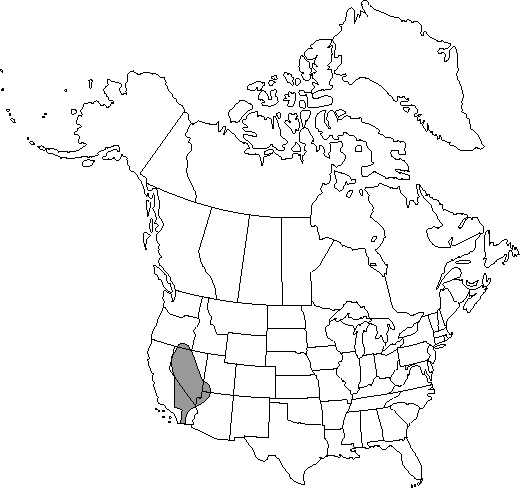Ephedra nevadensis
Proc. Amer. Acad. Arts 14: 298. 1879.
Shrubs erect, 0.25–1.5 m. Bark gray, fissured. Branches alternate or whorled, rigid, angle of divergence about 45°. Twigs pale green, becoming yellow with age, not viscid, glaucous, with numerous longitudinal grooves; internodes 1–6 cm. Terminal buds conic, 1–3 mm, apex obtuse. Leaves opposite (rarely in whorls of 3), 2–4(–8) mm, connate to 1/2–3/4 their length; bases thickened, brown, completely deciduous; apex obtuse. Pollen cones 1–several at node, ellipsoid, 4–8 mm, sessile or on short peduncles with 2 pairs of basal bracts; bracts opposite, 5–9 pairs, yellow to light brown, obovate, 3–4 × 2–3 mm, membranous; bracteoles slightly exceeding bracts; sporangiophores 3–5 mm, exserted to 1/4–1/2 their length, with 6–9 sessile to short-stalked (less than 1 mm) microsporangia. Seed cones 1–several at node, nearly globose, 5–11 mm, on long peduncles, with 1–2 pairs of basal bracts; bracts opposite, 3–5 pairs, nearly circular, 4–8 × 3–6 mm, herbaceous, with light brown to yellow-green center, occasionally pinkish tinged, margins entire. Seeds (1–)2, ellipsoid, 6–9 × 2–4 mm, brown, smooth. 2n = 14, 28.
Phenology: Coning late winter–midspring.
Habitat: Dry, rocky slopes and hills, rarely in sandy flat areas
Elevation: 700–1900 m
Distribution

Ariz., Calif., Nev., Oreg., Utah.
Discussion
Selected References
None.